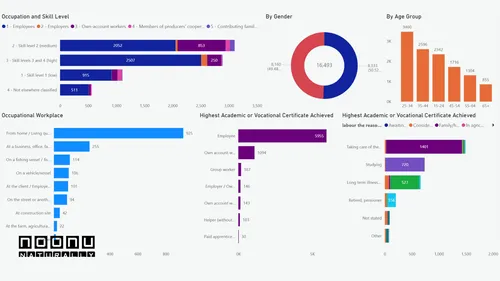Population Size and Distribution
Noonu Atoll records a registered population of 16,493 individuals, while the residential population stands slightly higher at 16,637. This difference reflects population mobility, where some individuals are registered in the atoll but reside elsewhere, and others live in the atoll while registered in different locations. Population distribution varies across the islands, with each island contributing to the overall demographic structure. These figures provide essential insights for understanding population density and planning resource allocation effectively.
Gender Dynamics
The gender composition of Noonu Atoll shows notable variation between registered and residential populations. Among the registered population, males account for 8,160 (49.48%) and females for 8,333 (50.52%), indicating a balanced distribution. In contrast, the residential population consists of 6,593 males (39.63%) and 10,044 females (60.37%), revealing a significant gender disparity. This imbalance suggests underlying factors such as employment opportunities, migration trends, and family structures influencing demographic patterns.
Marital Status and Age Structure
Data on marital status categorizes individuals as married, never married, divorced, or widowed, offering insights into social and family structures within the atoll. Age distribution spans from 0–14 years to 65 years and above, highlighting the demographic composition across life stages. A notable concentration exists in the 25–34 age group, with 4,518 individuals, indicating a strong presence of young adults. This demographic trend has implications for workforce development, education, and social services.
Migration Patterns
Differences between registered and residential populations highlight internal migration within the Maldives. Information on residents’ registered home atolls illustrates the interconnectedness of Noonu Atoll with other regions. These migration patterns are critical for understanding population distribution, resource allocation, and regional development planning.
Other Libraries

Educational Profile of Noonu Atoll
Noonu Atoll's 2022 education census indicates high formal education attendance (95.87%). Secondary education is the top attainment. Native language literacy is 98.23%, while English literacy is 20.11%. Data is broken down by gender and age.
Noonu Atoll Council
reports

Labour Force
This interactive dashboard provides a detailed visualization of labour force statistics across Noonu Atoll, transforming raw data into meaningful insights for decision-makers, stakeholders, and the community.
Noonu Atoll Council
reports